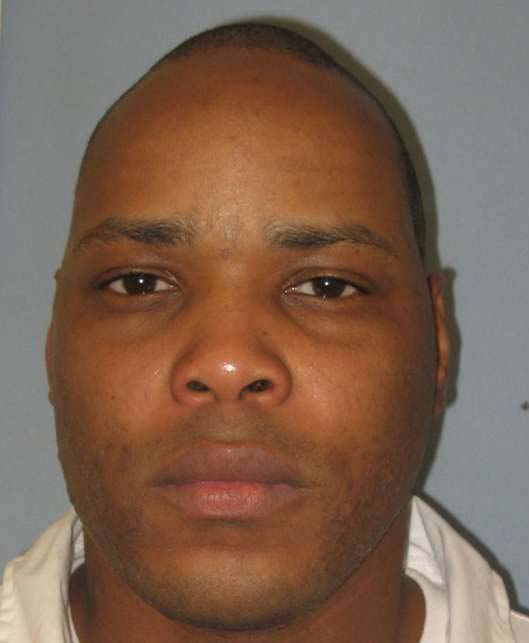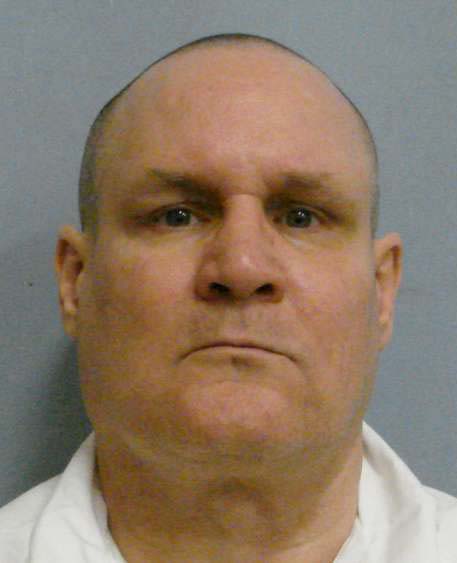Convicted of Escambia murders, trio await fate on Death Row



By DON FLETCHER
News Staff Writer
When Willie B. Smith III was executed last week at William C. Holman Correctional Facility — almost 30 years to the day after he abducted and killed 22-year-old Sharma Ruth Johnson near Birmingham — he died nearly 200 miles from the site of his crime.
Three other Holman inmates scheduled to eventually pay the ultimate price for their respective crimes will hear the executioner’s song within a relatively few miles from where they committed them.
The three facing capital punishment for murders committed locally include a Hispanic man (Cuhuatemoc Hinricy Peraita), a black man (Cedric Jerome Floyd) and a white man (Brett Richard Yeiter).
Of the three, Peraita has spent the most time behind bars. He has been imprisoned for slightly less than 20 years, all but five of them on Death Row, as the slow wheels of the appeals process continue to grind.
Peraita was convicted in 1996 and sentenced to life without parole for his part in the 1994 murder of three employees during the robbery of a Gadsden fast-food establishment. Three years after he was convicted, he was involved in another homicide, this one behind prison walls.
Peraita was sentenced to die for his role in the 1999 murder of fellow inmate Quincy Lewis, who was stabbed to death by another Death Row inmate while Peraita held him down.
The fact that Peraita was already imprisoned under a life sentence and that he had taken a life in the 20 years preceding the Holman murder allowed the state to seek and obtain the death penalty against him.
Floyd was condemned to death in 2014 for the murder of Atmore resident Tina Roshell Jones, with whom he had shared an on-again, off-again relationship for two years.
According to court documents, Jones had ended their relationship by text message in late 2010. When Floyd later discovered that Jones had started dating another man, he broke into her 5th Avenue residence shortly after midnight on January 2, 2011.
He shot Jones, the mother of four children, in the back as she ran from him, then shot her twice more, execution style, as she lay gravely wounded on the floor of her home.
An Escambia County jury deliberated only 40 minutes before recommending the death penalty by a vote of 11-1.
The recommendation, which was accepted by the presiding judge, was based upon the facts that (a) the murder was committed while Floyd was imprisoned (on probation) for a violent crime, (b) Floyd had previously been convicted of a felony (first-degree domestic violence) in which there was violence or a threat of violence, and (c) the murder was “especially heinous, atrocious or cruel when compared to other capital offenses.”
Yeiter has been in prison less than three years, having been convicted in 2019 of the October 27, 2014, shotgun slaying of his father-in-law, Paul Phillips, who was pastor of Book of Acts Holiness Church, just north of the Florida line, near Flomaton.
Court documents show that Yeiter, who lived in Jay, Fla. at the time, and Phillips argued at the church. Yeiter left, went home and got a 20-gauge shotgun, returned to the church and shot Phillips as the pastor sat in his car.
Yeiter headed west in his pickup, dumping the murder weapon in Arkansas before his eventual capture near Amarillo, Texas. An Escambia County jury recommended by a 10-2 vote that Yeiter should pay the ultimate price for his crime, and the trial judge agreed.
If and when either of the three is executed, it will be a rare occasion.
According to Alabama Department of Corrections records, the only inmate ever executed after being convicted in Escambia County after the state switched from hanging to electrocution in 1927 is Christopher Thomas Johnson of Atmore, who was put to death by lethal injection on October 20, 2011.
Johnson was sentenced to die for the 2005 suffocation and beating death of his six-month-old son, Elias Ocean Johnson. His execution occurred so soon after his conviction because he refused to allow his attorneys to appeal the death sentence on his behalf.
Court documents show that Johnson inflicted 85 separate wounds on his son. He testified at his own trial, telling the court he killed the child because he “hated his wife, did not want to be near her and did not want to worry about his wife’s threats of putting him in jail for alimony or child support.”
ADOC records show that Johnson chose as his last meal a baloney and turkey sandwich with tomatoes and cheese, French fries and an orange soda. “Game over” were the last words uttered by the child killer before the lethal dose of drugs was administered.
Death Row notes
*Holman Correctional, where all Alabama’s condemned male inmates are imprisoned, now houses 163 such convicts. Five women who are also awaiting the executioner’s song are housed at Julia Tutwiler Prison for Women in Wetumpka.
*The men sentenced to death in Alabama are divided almost equally between blacks (79) and whites (82). There is also one of Middle Eastern descent and one of Hispanic heritage. Of the five condemned females, one is black and four are white.
*Alabama carried out its first execution by a means other than hanging on April 8, 1927, when convicted murderer Horace DeVaughan of Birmingham died in the electric chair at Kilby Prison (now Kilby Correctional Facility) in Montgomery County.
*The first woman executed in the state was Selina Gilmore, who was put to death by electrocution on January 24, 1930, also at Kilby, after she was convicted of the shooting death of a popular Birmingham waiter.
*The last woman put to death by the state is Lynda Lyon Brock, who was electrocuted at Holman on May 10, 2002, after being convicted of the 1993 murder of an Opelika police officer.
